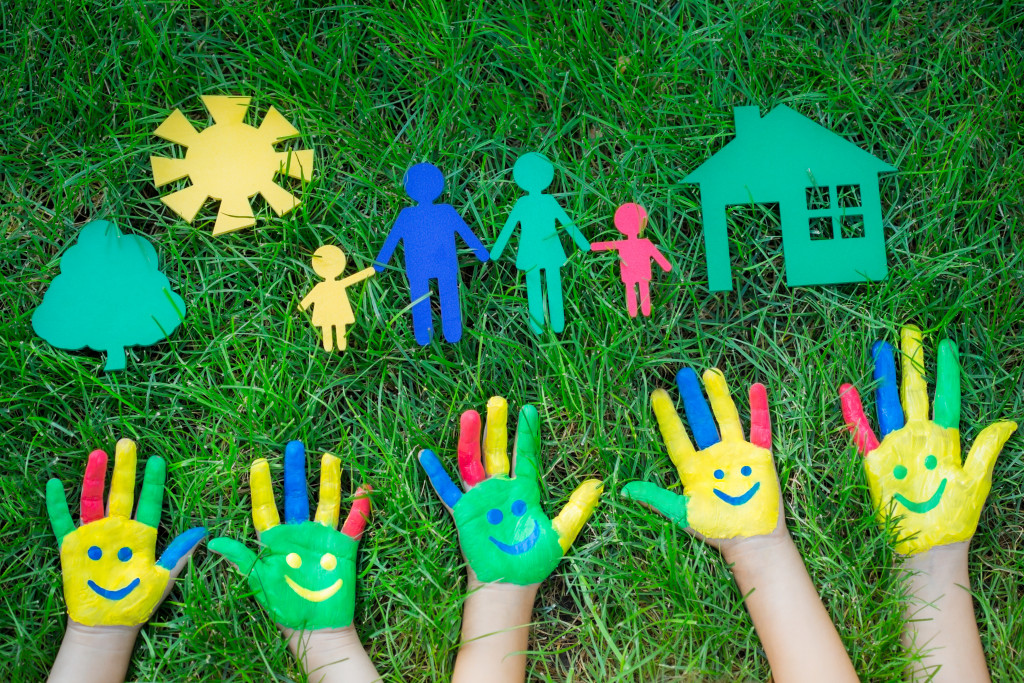Playing is how children learn and develop, so the best thing that parents can do for their kids at this age is to provide them with the right tools and space for playing. Unfortunately, some parents cannot fulfill this. Parents nowadays tend to be busier and focus on their children’s academics or extracurricular activities, neglecting their children’s need for free play. The effects of playing on children’s optimal development cannot be denied that the United Nations High Commission for Human Rights recognizes play as a right of every child.
No matter what the activity looks like, what they use, and who they play with, when children play, they work. They may prefer being alone or with others, play messily or calmly, or speak aloud or quietly in their heads—whichever they prefer, all they need is freedom and space to play. Your job as a parent is to provide them with a safe place to play and, as much as possible, supervision. Before you buy land, make sure that it can provide adequate outdoor space for your children to play. Here are ways to make your backyard a safer place to play.
Set the rules and boundaries
You can write the rules down and place them on the walls so that when your children’s friends come over, everyone knows what they’re ought to do. Make sure to let them know their boundary, too, especially when you don’t have a fenced yard. That way, they will know where they should not be playing.
Be there to supervise them. If you are not available, have another responsible person watch over your kids while playing. Younger ones tend to wander off or get injured. They might even go to the busy roads. Also, watch over your kids when they are playing around pools or on a trampoline.
Look around for possible hazards
These can be any items around the house, including toxic plants or chemicals for cleaning. Remove anything in your children’s path that can cause them injury and keep any chemicals out of their reach. Look around your yard for any natural hazards, too, such as low tree limbs or fire ant mounds. Moreover, check their playhouses or tree forts if there are stinging insects. Instead of pesticides or herbicides, it will be much better if you choose organic-approved products or discourage your kids from playing in a treated backyard within forty-eight hours.
Certain plants are toxic when eaten, so be sure to teach your children not to pick and eat anything if they don’t ask you first. The most common cause of poisoning among preschoolers is eating toxic plants. In fact, they eat just about anything when it looks good for them, so the best thing you can do is to avoid growing poisonous plants.

Quit on a trampoline
Children jump for joy on trampolines, but many injuries happen in such an activity. The Pediatric Orthopaedic Society of North America reports that there were over one million people on emergency visits for the past nine years due to trampoline-related accidents. Approximately one-third of these injuries include broken bones, and mostly, the victims are around the age of sixteen and younger. Take note that accidents usually happen when there is more than one person jumping on a trampoline. However, for better safety, skip on having a trampoline in your backyard.
Increase the security around the pool
Among children aged 1 to 4, drowning is the leading cause of death. Children at this age are most eager and active to explore their surroundings, and water proves to be very attractive for them. But they don’t understand how dangerous being around water can be, whether in the bathtub or swimming pool at home.
To avoid accidents in and around the pool, keep the windows and doors to the pool locked all the time. It pays to supervise your kids at all times, with it being better than any other safety devices you install.
Secure a fence
While you can simply give your children rules and boundaries, make sure to install a fence for your peace of mind. Fences can keep your children and pets just playing within the yard.
Examine play structures for any wear and tear
Check your children’s play stations like swings, slides, and many others for any signs of wear. They may have damaged floorboards, rotting wood, loose steps and railings, or protruding bolts, so make sure to get them all thoroughly checked before allowing your children to use them.
Your kids’ development and safety should go hand in hand. Give them the best childhood by allowing them playtime while ensuring their safety.
